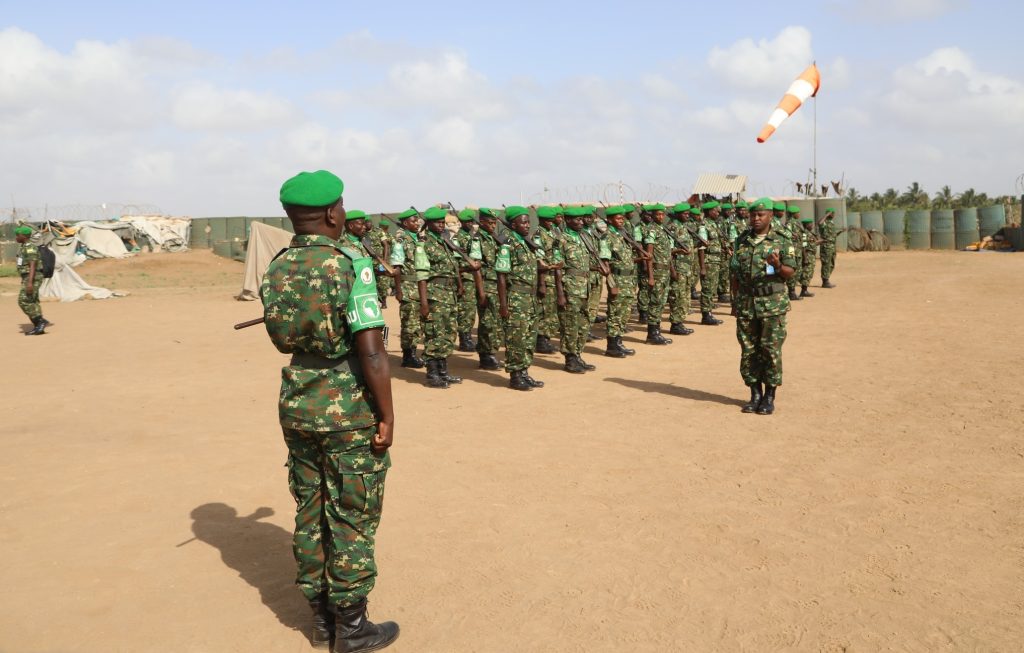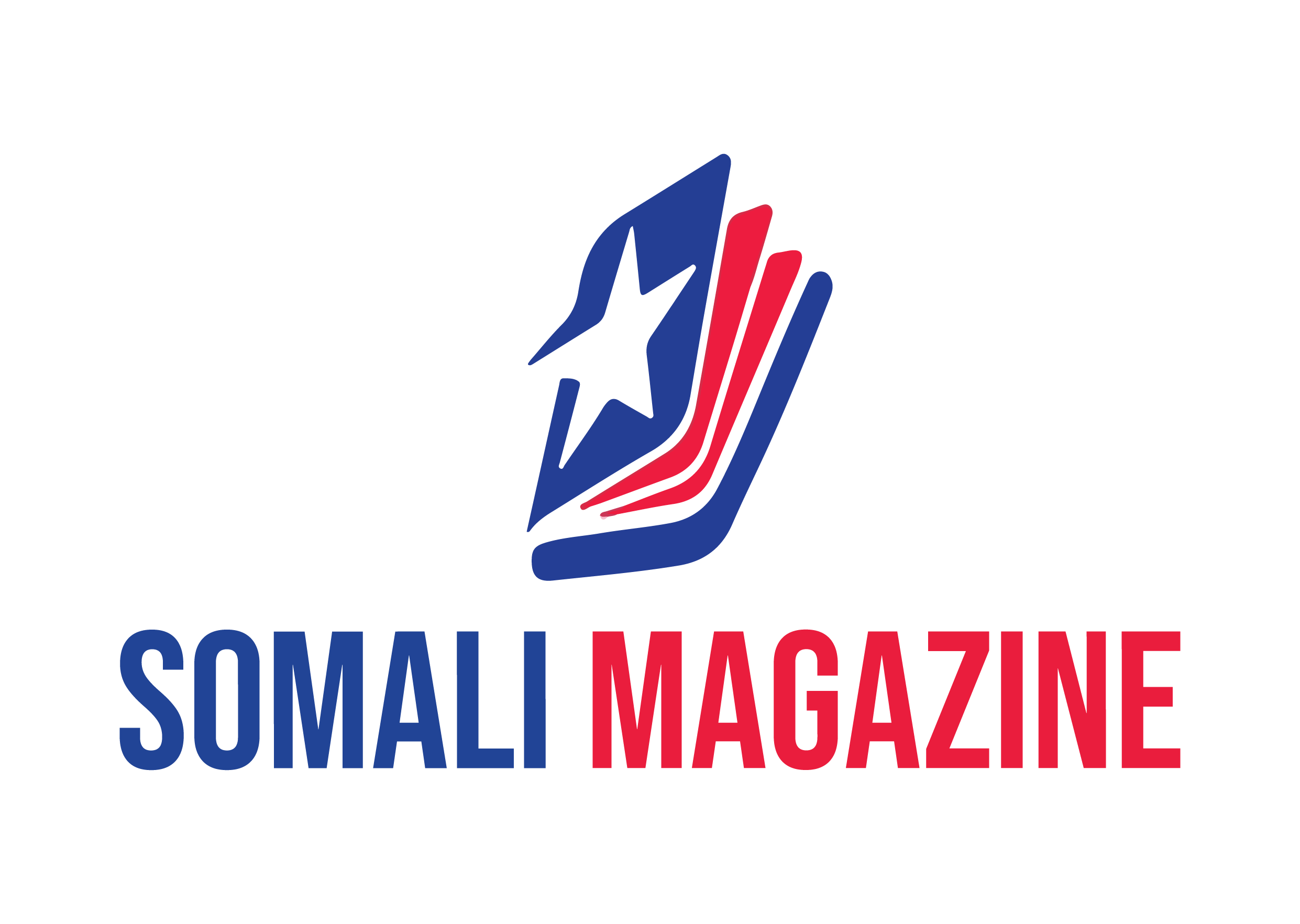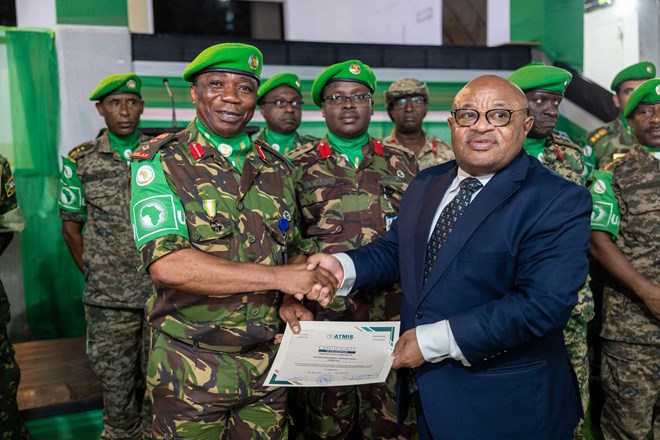Facebook Twitter (X) Instagram Somali Magazine - People's Magazine
AU mission strengthens fight against al-Shabaab while navigating political and funding challenges.
A month into its transition to the African Union Support and Stabilisation Mission in Somalia (AUSSOM), senior military officials from the mission met with leaders of the Somali National Army (SNA) to discuss coordinated strategies against al-Shabaab. This marks another stage in the African Union’s (AU) continuous efforts in Somalia, which began in 2007.
AUSSOM represents the third iteration of the AU’s involvement in Somalia. It was initially AMISOM (African Union Mission in Somalia) in 2007 before evolving into ATMIS (African Union Transition Mission in Somalia) in April 2022. As of January 1, 2025, AUSSOM has taken over, aiming to stabilize the country while continuing efforts against al-Shabaab.
On February 6, Acting AUSSOM Force Commander Major General Marius Ngendabanka held discussions with Somali security officials, including Chief of Defence Forces General Odowa Yusuf Rage. Their talks focused on strengthening collaboration and advancing joint military efforts. This meeting was one of several aimed at building upon the achievements of ATMIS and enhancing operational effectiveness.
The renewed military campaign aligns with the Somali government’s recent decision to relaunch operations against al-Shabaab. These efforts fall under the framework of UN Security Council Resolution 2767 (2024), which mandates AUSSOM to assist Somalia in weakening al-Shabaab and other extremist groups as part of its stabilization plan.
With AUSSOM replacing ATMIS, several key changes have been introduced. Unlike ATMIS, which had a three-year mandate, AUSSOM has been given a five-year timeframe, allowing for a more sustained and strategic focus. A core objective of the new mission is to strengthen the Somali Security Forces (SSF) to ensure they can independently maintain national security. At the same time, AUSSOM will continue providing backup support while focusing on urban-based operations.
AUSSOM operates with a reduced troop presence of approximately 11,146 personnel, which is lower than its predecessors. This smaller force must maximize efficiency despite limited numbers. Adding to its challenges are increasing tensions between Somalia and Ethiopia, further complicating the security landscape and regional stability.
Another major concern is securing adequate funding and logistical support. ATMIS previously struggled with financial difficulties, and AUSSOM must find ways to avoid similar setbacks. Without sufficient funding, the mission’s effectiveness could be severely impacted.
Some observers argue that AUSSOM is merely a continuation of ATMIS under a new name, still facing the same unresolved issues. One of the most pressing concerns is the slow development of the SSF, which remains a crucial component of Somalia’s long-term security. Without a well-trained and capable national force, al-Shabaab will continue to pose a serious threat.

Recent reports indicate an increase in al-Shabaab attacks, highlighting the continued instability in Somalia. This raises questions about whether AUSSOM can achieve its objectives, particularly if the SSF remains underprepared.
Beyond military operations, political divisions within Somalia present another significant challenge. The Federal Government of Somalia (FGS) continues to struggle with tensions among its Federal Member States, making it difficult to foster a united security strategy against al-Shabaab. Without greater political cooperation, the mission’s success will be harder to achieve.
The success of AUSSOM will depend on multiple factors: ensuring sufficient financial and logistical support, navigating complex political challenges, and strengthening Somali forces to take on greater responsibility. While AUSSOM aims to build upon the progress made by ATMIS, it remains uncertain whether it will be able to deliver tangible improvements. The mission must demonstrate that it can create meaningful change rather than simply inheriting the same difficulties under a new name.
Although AUSSOM presents an opportunity for enhanced stability in Somalia, the path forward remains filled with obstacles. Only time will tell if it can rise to the challenge and help secure lasting peace and security in the region.

